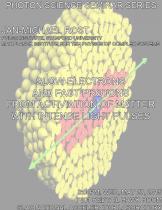Speaker: Jan M. Rost (PULSE Institute, Max Planck Institute)
Program Description
Intense short laser pulses are usually associated with “high” energy phenomena such Above Threshold Ionization (ATI) in atoms and molecules. Experimental photo electron spectra from illuminating different targets with few cycle mid infrared pulses exibit a universal peak at a few eV, the so called “Low Energy Structure” (LES).
We will show that soft recollisons of electrons are responsible for the LES in surprisingly far reaching complementarity to ATI which can be viewed as the consequence of hard recollisions. Both types of recollisions give rise to dynamically distinct and very different but universal characteristica, independent of target details. This fact allows us to analytically predict the pulse length dependent and focus averaged spectral position of the LES in good agreement with recent experiments.
In the second part of the talk we will use hydride clusters (from water, ammonia and methane molecules) to elucidate the role of proton dynamics in the explosion of such clusters when illuminated by intense X-ray pulses. We find that the maximal kinetic energy of the ejected protons reaches a maximum in a small but experimentally relevant intensity window of the light pulse accompanied by a significant reduction of the electron temperature in the target. Consequences, in particular for radiation damage, will be discussed analyzing the Coulomb explosion of Lyzozyme molecules.





